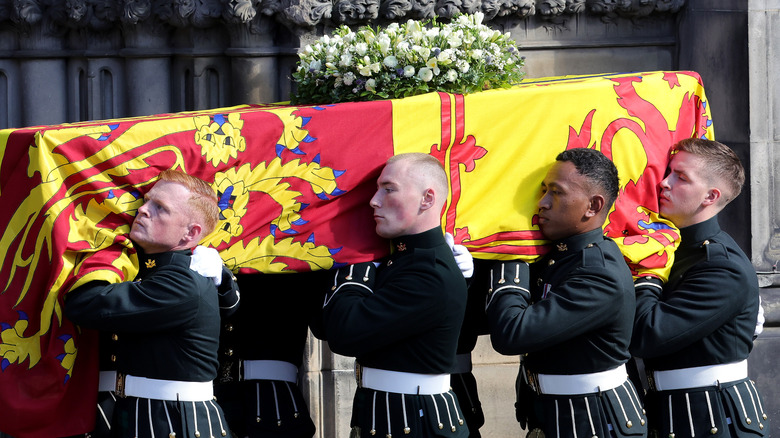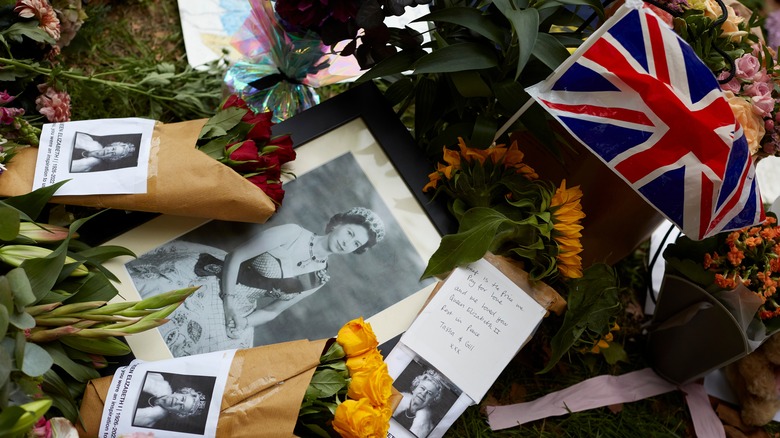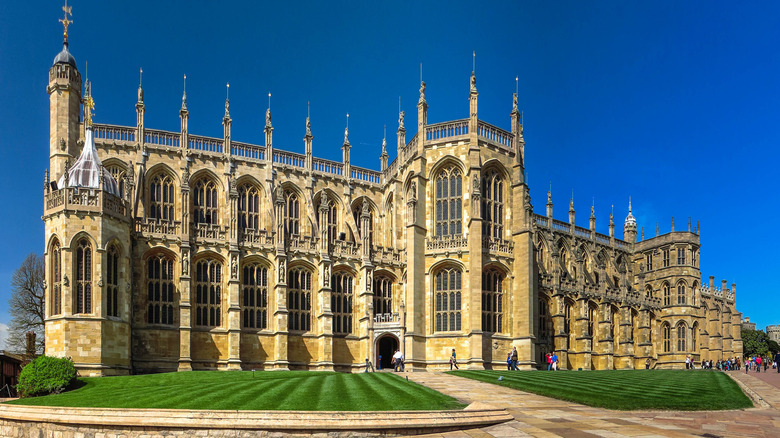The Storied History Of Queen Elizabeth II's 30-Year-Old Coffin
Operation London Bridge — the protocol for handling the queen's death — was set into motion as soon as Queen Elizabeth II died on September 8, 2022, at the age of 96. Unknown to many, the meticulous planning of her death began shortly after she ascended the throne in 1952 after her father's death. In a New York Times article, British Commonwealth and history professor, Philip Murphy, said, "From the moment the queen became monarch, Whitehall started the planning process about what would happen when she died." Throughout the years, those involved in the planning — including the police, the media, and the government — reportedly met three times a year to discuss and make changes to Operation London Bridge as necessary, and the queen herself was involved in planning her funeral.
In 2021, Politico obtained the details of Operation London Bridge and outlined the events that would take place up to 10 days after the queen's death. The thorough planning, of course, also includes the coffin where Queen Elizabeth II will be buried in. Members of the royal family are commonly buried in lead-lined coffins. Lead serves as protection and helps keep the body preserved for longer, as the heavy metal prevents moisture from entering and in turn, slows down the decomposition process. Per Technology, the practice dates back to the olden times when there weren't other techniques available yet to preserve the body.
Details about the queen's coffin
Queen Elizabeth II's coffin was manufactured by a company called Henry Smith, which closed in 2005. The company was established in 1869 and manufactured caskets by hand until it closed down (via The Daily Mail). As reported by the Telegraph, the queen's coffin was ordered and made more than 30 years before her death. It's the same company that provided the coffins for other well-known personalities including Queen frontman Freddie Mercury, actress and singer Diana Dors, musician Jimi Hendrix, and the queen's late husband, Prince Philip, the Duke of Edinburgh.
When Henry Smith closed, the company T Cribb & Sons took over, but records were lost in the transition and the exact date of manufacture couldn't be determined. Traditionally, royal coffins are made from English oak taken from the Sandringham estate. The exact details about Queen Elizabeth II's coffin are difficult to confirm, as they were lost with the records. What is known is that it took about a week for the coffin to be completed. Today, it is rare for coffins to be made of English oak, as the material is difficult to procure and will be too pricey. As an alternative, today's oak coffins are made from American oak.
The detailing on the coffin — fitments, clasps, and handles — was reportedly provided by the now-defunct company Newman Brothers, a coffin furniture manufacturer that was located on Birmingham's Fleet Street. The details were specifically designed for royal caskets, and the fitments were created to securely hold the orb, scepter, and crown on top of the coffin.
Queen Elizabeth II's final resting place
After the queen's coffin was manufactured, it was kept and maintained by JH Kenyon Ltd. and then was transferred to Leverton & Sons in 1991 when the firm was first used by the royal family. Since Queen Elizabeth II's coffin is lined with lead, it is significantly heavier than a standard coffin and eight pallbearers are required to carry it instead of just six. As reported by Metro, Princess Diana's coffin, which was also lined with lead, weighed one-fourth of a ton, or about 500 pounds. Queen Elizabeth II's coffin is essentially a coffin within a coffin; the inner coffin is made of wood and then protected with lead, and it is placed inside an outer coffin. The process is called the lead shell and case method, as noted by the Telegraph.
Queen Elizabeth II's coffin was first revealed to the public three days after her death. The Scottish royal standard flag was draped over the coffin, and an arrangement of sweet peas and dahlias picked from Balmoral was displayed on top of her coffin as well (via France 24). After 10 days of mourning, Queen Elizabeth II's remains will be transported to Windsor Castle's St. George's Chapel. In the chapel is the King George VI Memorial Chapel where Queen Elizabeth II's parents, King George VI and the Queen Mother, are also interred. The remains of Princess Margaret, the queen's sister who died in 2002, are also in the chapel, as reported by the New York Times.


